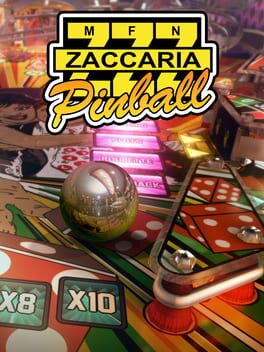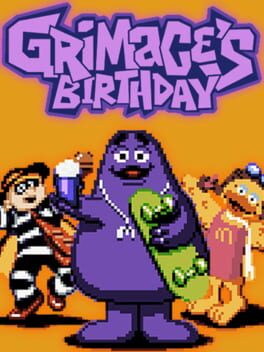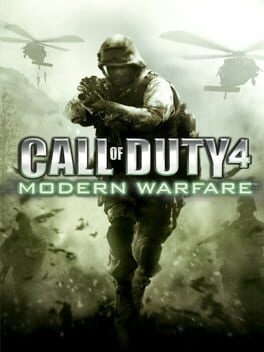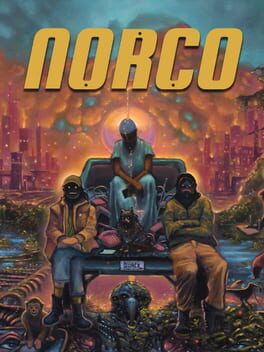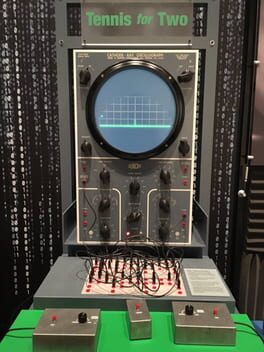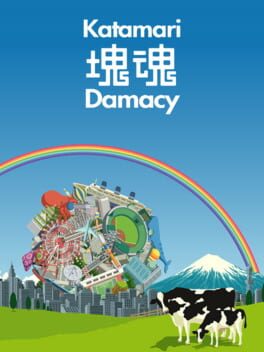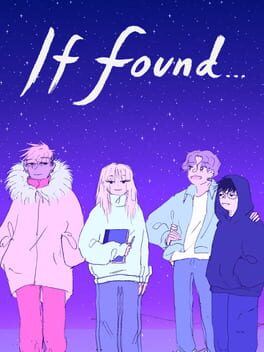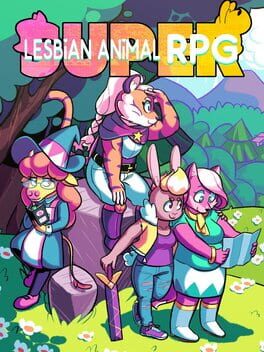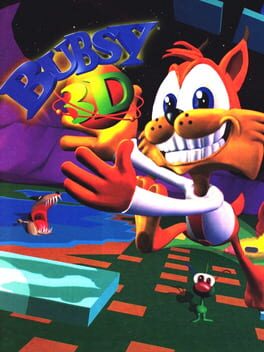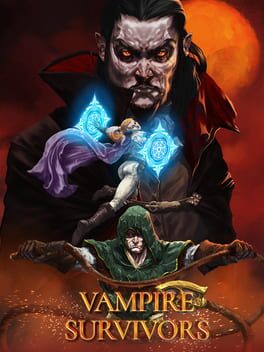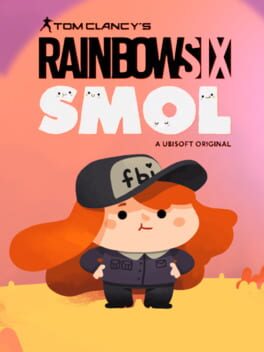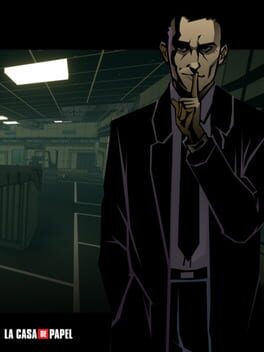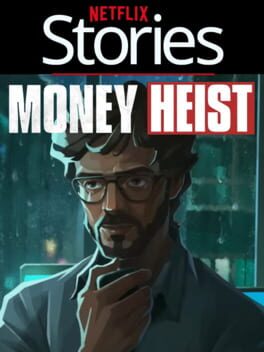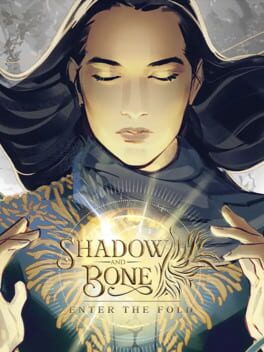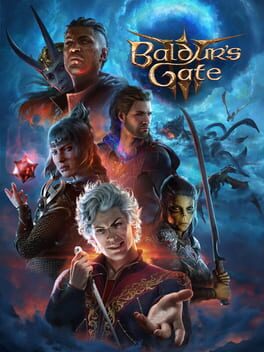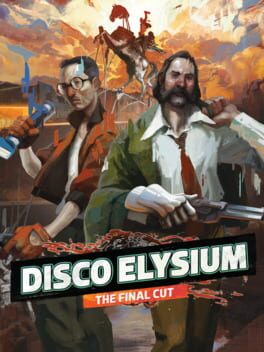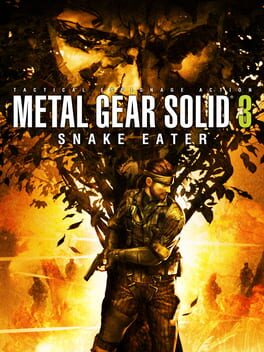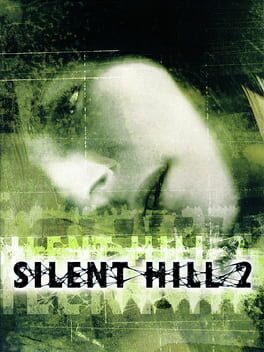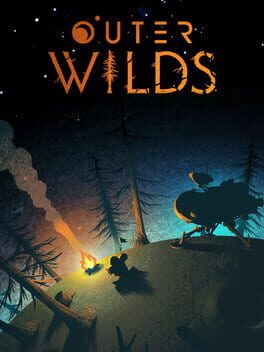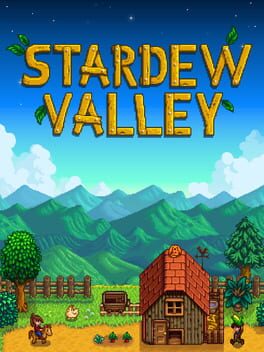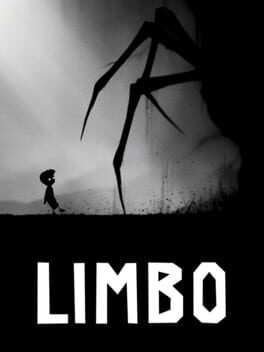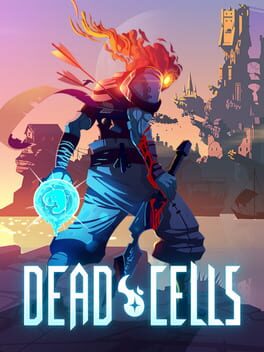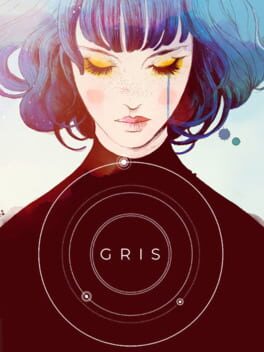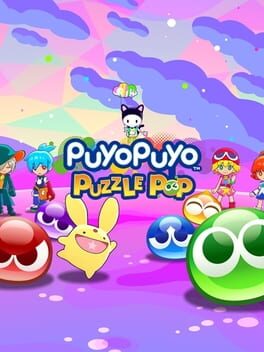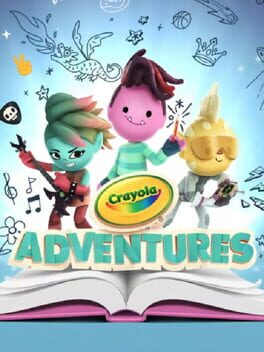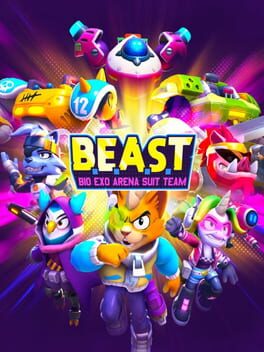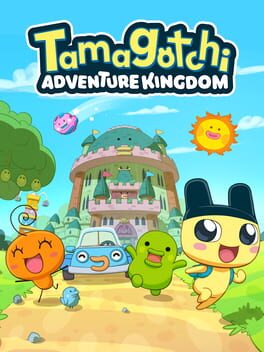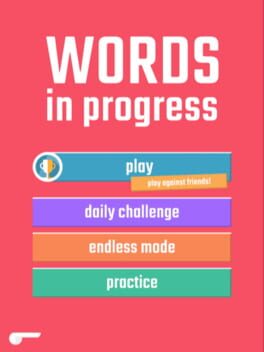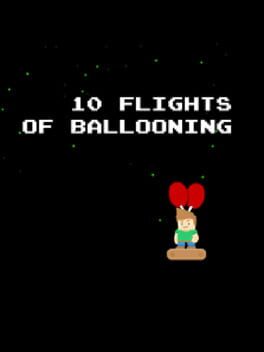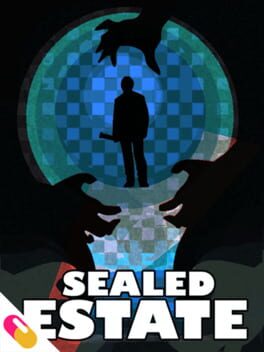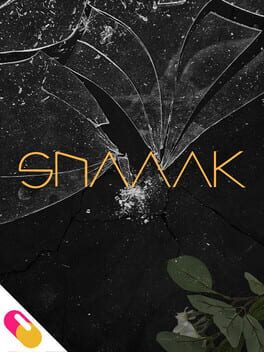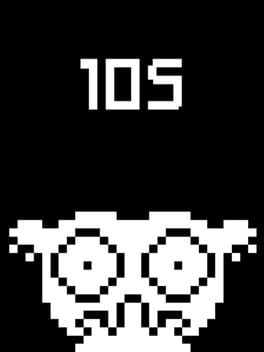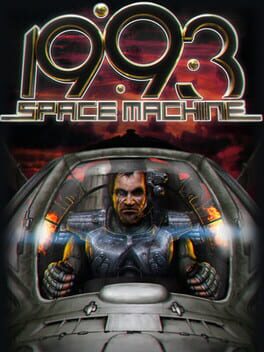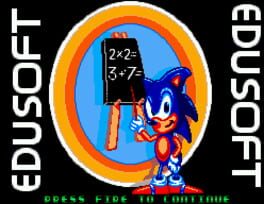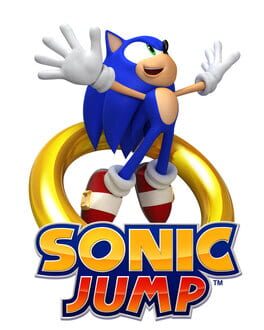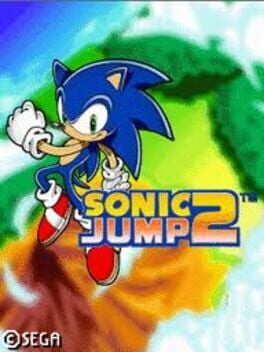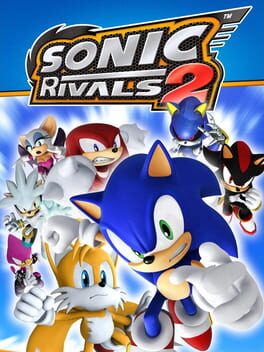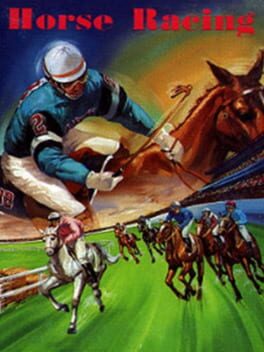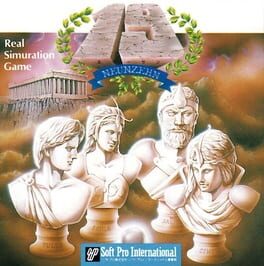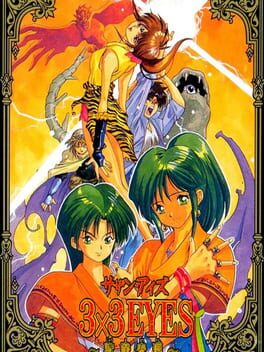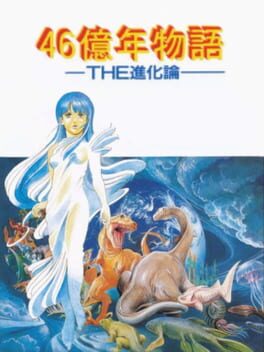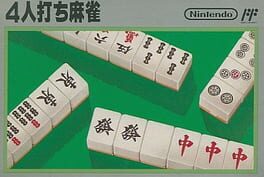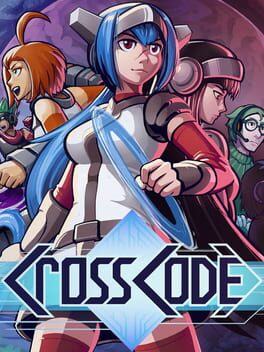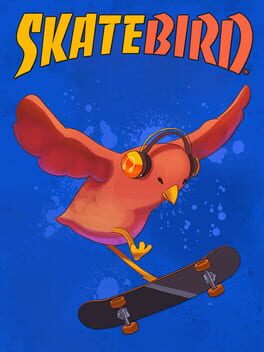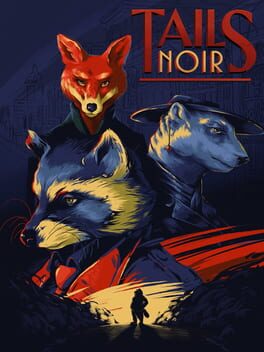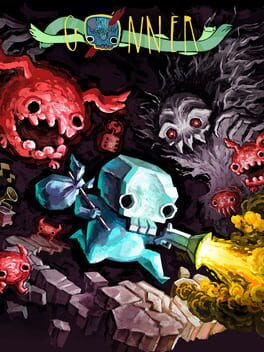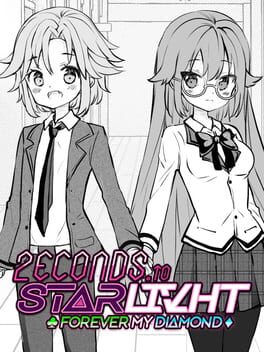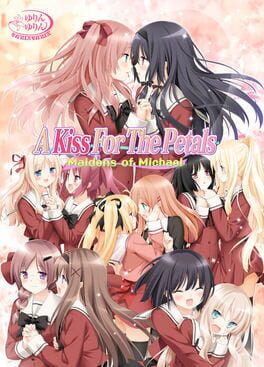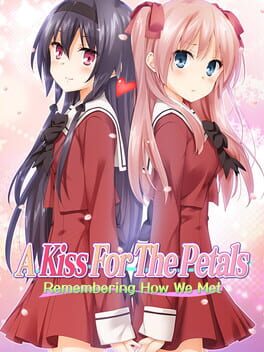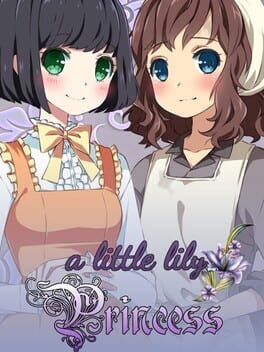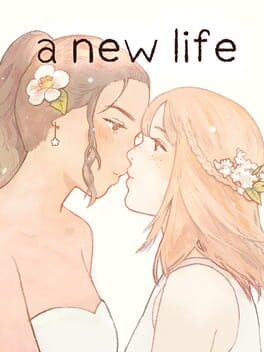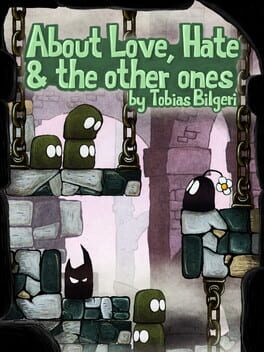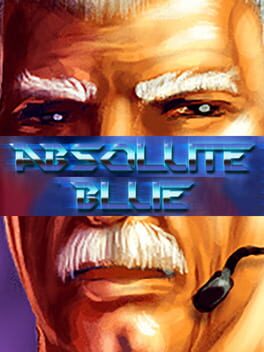RedWizard404
89 reviews liked by RedWizard404
Zaccaria Pinball
2013
Why must there always be a tragic hero in the third row? Ok, I know I'm late to this party again, having played my old pinball simulations for ages, totally ignoring what's happening more recently. I also have to admit, that I'm not investing enough into PC hardware to keep track with the state of the art in general and I actually don't have to, because most games I'm interested in are old enough or not very performance hungry. I did know of the Pinball FX family though and have heard of other projects, but Zaccaria Pinball wasn't amongst them.
Could be because it still seems to be early access on Steam, which makes me wonder why I found Zaccaria Pinball on Nintendo Switch recently, but having not seen Pinball FX/FX3 or Pinball Arcade pop up on the e-store as well when I was looking for the genre, I'm wondering about the quality of my searches in general anyway. With any of the three platforms coming with at least one free table I was having a blast nonetheless and having fun with the HD rumble on my pro controller and the OLED screen in vertical, I was also beginning to buy DLCs.
And here's where the tragic journey begins, the reason I'm picking Zaccaria Pinball as my review subject at this very moment, but let's please emphasize first that it's actually me spending dough on a free platform to buy everything extra for. Yeah, that's not me, except for deals on Capcom Arcade Stadium for instance, because I did find some sales for Pinball FX3 and though I don't see me buying individual tables for bloody 15€ to use on the recent Pinball FX, I just had to spend another tenner on the FX3 Williams three-pack containing Attack from Mars, the machine I was doing two hour train rides to play back in the nineties.
Given that favorite pinball tables can be very autobiographical, I actually appreciate at least a split to affordable bundles, but on the other hand I would maybe be interested in more tables, would I have the option for a demo that the Switch versions of both Pinball FX and Pinball Arcade don't offer. It's another huge problem Pinball Arcade lost a part of their licenses, so my only chance to access the AC/DC table for instance was ordering the Stern Pinball Arcade package sold individually. I still hope the code in box version will work when it finally arrives.
However, Zaccaria Pinball did impress me instantly with next to the two free tables every other installment is playable as a demo. They have nothing to hide and that's for a good reason. Zaccaria Pinball is a simulation dream. You've got everything essential from the competitor's systems,but you can go much deeper by setting ambient light or wear on the table next to physics and camera. It can take minutes to study the possibilities before even thinking of playing and the attention to detail is plainly awesome. Having played, you get statistics for each ball's points and the distance they rolled. You immediately recognize Magic Pixel Games love what they're doing.
I'm willing to believe simulations of their signature tables are authentic in design as much as they are in physics, but here starts that issue because of which I'm not dumping all my money into Zaccaria Pinball right now. What they do have is fifties to sixties style retro tables I'm not sure existed. Then you've got the original electromagnetic and solid state Zaccaria tables from the seventies and eighties I can't remember having played, though it's possible long ago at a bar or something. I just don't have a relation to those tables with typical themes from sports to space etc. and as much as I love pragmatic old school designs, none of them catches my attention enough.
Whilst you can set the gap in the middle to a more modern narrow spacing on the old tables, Zaccaria Pinball actually offers remakes of their popular themes not like fantasy tables by Zen, but more like an authentic built as if the company had released them at the beginning of the nineties when their production had ceased. Those tables use elements that could just work as well as a real table and they're really fun to play. Same goes for deluxe versions that are comparable to Pinball FX interpretations of cabinets like Fish Tales, where you have digitally animated figures enhancing the design.
It really seems like they're doing everything right, having something in store for any generation of classic pinball fans and though they might not have the captivating music and knocking on the remakes, they still manage to add more familiar elements without denying typical leveled structures for instance. I appreciate this a lot, but do they want to be a sleeper like that?
Licensing is a very big issue in this segment and on one hand Magic Pixel Games are my heroes for creating their own level of simulation, but on the other it was very brave to enter competition just with one catalog available. I'm sure there are ecstatic fans who are very satisfied, but in this niche of gaming, Zaccaria Pinball occurs to be a whole niche on its own, for that alone I'm willing to spend a few Euros.
They're not even asking too much, I think. The contents of the packs between 5 and 10€ still appear generous, even though single tables can be purchased for between 2 and 3€ each. So what Zaccaria Pinball at least is doing is showing how it's done to the other big players Pinball Arcade (who need to really be revived) and Pinball FX who are going in the wrong direction right now.
But of course right now I want to play tables I've once found in the wild or I'm still looking forward to. It so happens I have a huge history with cabs from the Williams sets on Pinball FX3 and I've just played the Ghostbusters table in the Stern pack a few weeks back at the Dutch Pinball Museum in Rotterdam. I'm still looking for Data East stuff as a simulation, especially the Batman 1989 license that I visited a local ice cream parlor for after school as a kid. But I doubt Zaccaria Pinball will ever go that direction.
So in conclusion this is probably the best game I'm not going to play very soon, which is sad, but Zaccaria Pinball seems like built on a limitation from the start being nothing but an impulse as a great example maybe, but I don't feel the table have enough charisma to carry the game on their own. It's great for fans and except for slight bugs of caught balls on at least one remake, which might actually rather add to realism, it looks finished enough to me to play it. On Switch that is, of course.
I don't know if we can encourage Magic Pixel Games to just use the same engine on a follow up simulator for other licensed tables, but we should at least honor them with a purchase or two. As soon as I'm back on budget I will start buying everything just to enlarge the collection and send my thanks for an operation that doesn't seem to make a lot of sense but that they mastered anyway. It's maybe only adding to the variety of my tables, but when I'll start Zaccaria Pinball, I'll sure enjoy it.
Perhaps you like other of my related backloggd reviews like
Psycho Pinball
Stern Pinball Arcade
Pachinko Challenger
Puzzle Uo Poko
Could be because it still seems to be early access on Steam, which makes me wonder why I found Zaccaria Pinball on Nintendo Switch recently, but having not seen Pinball FX/FX3 or Pinball Arcade pop up on the e-store as well when I was looking for the genre, I'm wondering about the quality of my searches in general anyway. With any of the three platforms coming with at least one free table I was having a blast nonetheless and having fun with the HD rumble on my pro controller and the OLED screen in vertical, I was also beginning to buy DLCs.
And here's where the tragic journey begins, the reason I'm picking Zaccaria Pinball as my review subject at this very moment, but let's please emphasize first that it's actually me spending dough on a free platform to buy everything extra for. Yeah, that's not me, except for deals on Capcom Arcade Stadium for instance, because I did find some sales for Pinball FX3 and though I don't see me buying individual tables for bloody 15€ to use on the recent Pinball FX, I just had to spend another tenner on the FX3 Williams three-pack containing Attack from Mars, the machine I was doing two hour train rides to play back in the nineties.
Given that favorite pinball tables can be very autobiographical, I actually appreciate at least a split to affordable bundles, but on the other hand I would maybe be interested in more tables, would I have the option for a demo that the Switch versions of both Pinball FX and Pinball Arcade don't offer. It's another huge problem Pinball Arcade lost a part of their licenses, so my only chance to access the AC/DC table for instance was ordering the Stern Pinball Arcade package sold individually. I still hope the code in box version will work when it finally arrives.
However, Zaccaria Pinball did impress me instantly with next to the two free tables every other installment is playable as a demo. They have nothing to hide and that's for a good reason. Zaccaria Pinball is a simulation dream. You've got everything essential from the competitor's systems,but you can go much deeper by setting ambient light or wear on the table next to physics and camera. It can take minutes to study the possibilities before even thinking of playing and the attention to detail is plainly awesome. Having played, you get statistics for each ball's points and the distance they rolled. You immediately recognize Magic Pixel Games love what they're doing.
I'm willing to believe simulations of their signature tables are authentic in design as much as they are in physics, but here starts that issue because of which I'm not dumping all my money into Zaccaria Pinball right now. What they do have is fifties to sixties style retro tables I'm not sure existed. Then you've got the original electromagnetic and solid state Zaccaria tables from the seventies and eighties I can't remember having played, though it's possible long ago at a bar or something. I just don't have a relation to those tables with typical themes from sports to space etc. and as much as I love pragmatic old school designs, none of them catches my attention enough.
Whilst you can set the gap in the middle to a more modern narrow spacing on the old tables, Zaccaria Pinball actually offers remakes of their popular themes not like fantasy tables by Zen, but more like an authentic built as if the company had released them at the beginning of the nineties when their production had ceased. Those tables use elements that could just work as well as a real table and they're really fun to play. Same goes for deluxe versions that are comparable to Pinball FX interpretations of cabinets like Fish Tales, where you have digitally animated figures enhancing the design.
It really seems like they're doing everything right, having something in store for any generation of classic pinball fans and though they might not have the captivating music and knocking on the remakes, they still manage to add more familiar elements without denying typical leveled structures for instance. I appreciate this a lot, but do they want to be a sleeper like that?
Licensing is a very big issue in this segment and on one hand Magic Pixel Games are my heroes for creating their own level of simulation, but on the other it was very brave to enter competition just with one catalog available. I'm sure there are ecstatic fans who are very satisfied, but in this niche of gaming, Zaccaria Pinball occurs to be a whole niche on its own, for that alone I'm willing to spend a few Euros.
They're not even asking too much, I think. The contents of the packs between 5 and 10€ still appear generous, even though single tables can be purchased for between 2 and 3€ each. So what Zaccaria Pinball at least is doing is showing how it's done to the other big players Pinball Arcade (who need to really be revived) and Pinball FX who are going in the wrong direction right now.
But of course right now I want to play tables I've once found in the wild or I'm still looking forward to. It so happens I have a huge history with cabs from the Williams sets on Pinball FX3 and I've just played the Ghostbusters table in the Stern pack a few weeks back at the Dutch Pinball Museum in Rotterdam. I'm still looking for Data East stuff as a simulation, especially the Batman 1989 license that I visited a local ice cream parlor for after school as a kid. But I doubt Zaccaria Pinball will ever go that direction.
So in conclusion this is probably the best game I'm not going to play very soon, which is sad, but Zaccaria Pinball seems like built on a limitation from the start being nothing but an impulse as a great example maybe, but I don't feel the table have enough charisma to carry the game on their own. It's great for fans and except for slight bugs of caught balls on at least one remake, which might actually rather add to realism, it looks finished enough to me to play it. On Switch that is, of course.
I don't know if we can encourage Magic Pixel Games to just use the same engine on a follow up simulator for other licensed tables, but we should at least honor them with a purchase or two. As soon as I'm back on budget I will start buying everything just to enlarge the collection and send my thanks for an operation that doesn't seem to make a lot of sense but that they mastered anyway. It's maybe only adding to the variety of my tables, but when I'll start Zaccaria Pinball, I'll sure enjoy it.
Perhaps you like other of my related backloggd reviews like
Psycho Pinball
Stern Pinball Arcade
Pachinko Challenger
Puzzle Uo Poko
Grimace's Birthday
2023
🖕🖕🖕🖕🖕 Fuck This 🖕🖕🖕🖕🖕
I think this utilization of indie devs as a guerilla advertising force is enormously fucked up. It'll almost definitely dilute the indie scene and what videogames we talk about going forward. However, it's nothing new, in the sense that liscensed flash game shlock to sell products have been around forever (remember those LCD happy meal games? It's just like that but updated). It's a polished face to an age-old exploitation. Instead of giving the substanceless game the respect of actually getting direct scorn, which would ultimately embolden the product's aim of attention grabbing. Or otherwise meming around the existence of this which would flaccidly play right into its hands. Let's do a more 'macro informative' approach. Here's some interesting articles on recent abuses from the company in question to sate the appetite a bit:
Pandemic Racism
"McDonald’s actions speak louder than words. The reality is that 80 percent of McDonald’s majority Black and Brown workforce don’t have access to paid sick leave. That is dangerous under normal circumstances; during a global pandemic, it’s deadly." McDonald’s is Hiding Policies That Perpetuate Systemic Racism Behind Woke-Washing
Sexual Harrassment
"According to the lawsuit, since at least 2017, AMTCR knew about sexual harassment and allowed it to continue, unabated, by supervisors, managers, and coworkers at various of its McDonald’s restaurants. The harassing conduct, which was mainly directed at young, teenage employees, included frequent unwanted touching, offensive comments, unwelcome sexual advances, and intimidation. As AMTCR failed to adequately address the complaints of sexual harassment, many workers found the working conditions so intolerable that they had no choice but to quit." McDonald’s Franchise to Pay Nearly $2 Million to Settle EEOC Sexual Harassment Lawsuit
Corporate Malfeseance
"According to the SEC’s order, McDonald’s terminated Easterbrook for exercising poor judgment and engaging in an inappropriate personal relationship with a McDonald’s employee in violation of company policy. However, McDonald’s and Easterbrook entered into a separation agreement that concluded his termination was without cause, which allowed him to retain substantial equity compensation that otherwise would have been forfeited." SEC Charges McDonald’s Former CEO for Misrepresentations About His Termination
Check out The McDonald's Videogame (2006) by the dev team Molleindustria using Flashpoint to foster a better understanding of these corporate ghouls.
I think this utilization of indie devs as a guerilla advertising force is enormously fucked up. It'll almost definitely dilute the indie scene and what videogames we talk about going forward. However, it's nothing new, in the sense that liscensed flash game shlock to sell products have been around forever (remember those LCD happy meal games? It's just like that but updated). It's a polished face to an age-old exploitation. Instead of giving the substanceless game the respect of actually getting direct scorn, which would ultimately embolden the product's aim of attention grabbing. Or otherwise meming around the existence of this which would flaccidly play right into its hands. Let's do a more 'macro informative' approach. Here's some interesting articles on recent abuses from the company in question to sate the appetite a bit:
Pandemic Racism
"McDonald’s actions speak louder than words. The reality is that 80 percent of McDonald’s majority Black and Brown workforce don’t have access to paid sick leave. That is dangerous under normal circumstances; during a global pandemic, it’s deadly." McDonald’s is Hiding Policies That Perpetuate Systemic Racism Behind Woke-Washing
Sexual Harrassment
"According to the lawsuit, since at least 2017, AMTCR knew about sexual harassment and allowed it to continue, unabated, by supervisors, managers, and coworkers at various of its McDonald’s restaurants. The harassing conduct, which was mainly directed at young, teenage employees, included frequent unwanted touching, offensive comments, unwelcome sexual advances, and intimidation. As AMTCR failed to adequately address the complaints of sexual harassment, many workers found the working conditions so intolerable that they had no choice but to quit." McDonald’s Franchise to Pay Nearly $2 Million to Settle EEOC Sexual Harassment Lawsuit
Corporate Malfeseance
"According to the SEC’s order, McDonald’s terminated Easterbrook for exercising poor judgment and engaging in an inappropriate personal relationship with a McDonald’s employee in violation of company policy. However, McDonald’s and Easterbrook entered into a separation agreement that concluded his termination was without cause, which allowed him to retain substantial equity compensation that otherwise would have been forfeited." SEC Charges McDonald’s Former CEO for Misrepresentations About His Termination
Check out The McDonald's Videogame (2006) by the dev team Molleindustria using Flashpoint to foster a better understanding of these corporate ghouls.
Norco
2022
Unlike the vignette Swampstar by independent collective Geography of Robots, Norco is too much of a game to spare it from a rating in favor of an appreciation as a piece of art on its own and in that context, it might look like I disagree with a majority of critics, giving the interactive amalgam of an RPG and a Visual Novel raving reviews, but I will actually not be able to say much different about it. My astonishing conclusion though is, that I'm still not all that impressed.
In theory, alternate Louisiana in Norco could be a fictional alien world to me just like Neo Tokyo or a city on Mars. I was even joking if the title describes narcotics for Trollans until I found out it was actually a brand name for pain medication. Little did I know, however, that Norco is also an actual census-designated place in St. Charles Parish, Louisiana that derived its name from the New Orleans Refining Company and is home to a major Shell manufacturing complex. I'm learning every day.
You don't have to think much about why the company in the game Norco is called Shield and with the Shell facility having experienced catastrophic explosions twice the story sure appears less far fetched. I recommend reading the Honeysweat interview with GoR's Yutsi if you'd like to know more on his growing up in sight of that factory, comparing it to Midgar in the world of Final Fantasy.
Even without knowing Norco specifically, I was of course aware of the condition our world is in and I think it's hard to not see how close the narration stays with things happening in reality. It sure is condensed and emphasized, but we have everything from AI to ponzi schemes, messed up religious beliefs, unregulated capitalism or privately organized space travel. It's not like Orwell is predicting the future a couple of decades away, it's more like holding up a mirror, showing us the dystopia we're creating for tomorrow or a day after.
Born and raised in a small town bordered by the dilapidated ruins of an industry, having watched a company burning down to the foundations and knowing the history of a group buying out farmers to build a production plant in the area, I can nothing but relate to protagonist Kay returning to Norco. It's what you recognize best at a carnival. There are those who are too young to escape and those who never made it out, but then there are other people in their thirties or rather forties, returning to family business - taking care of parents or bringing up children of their own in an environment that appears at least more family friendly than the big city.
For Kay it's late. She has tried to cut loose and ignored her cancer infested mother trying to get in touch. Time doesn't stand still when you're away and as much things don't seem to change as long as you're there, everything is weirdly different once you turned your back and tried to start a life of your own independently.
Norco uses pixel art to illustrate this story and I don't really understand how this can be seen as innovation, because digitizing photographs for instance is something going back to the old Amiga days at least. It's not ugly at all, but, especially with the retro trend of recent years, something I'd rather call standard opposite to some of the reviews I've read. Recreating that off grid Amiga feeling especially with the first person solo adventure layout is another cup of Grog.
I've mentioned it before in my review for One Night Stand, when playing Our World Is Ended as one of my first actual visual novels, I was missing interaction with the screen other than clicking text. Despite being described as a point'n'click I was lucky to read up enough on Norco before to not expect it being the familiar third person story puzzle, so I was merely amazed at first that Norco was allowing me to dive into the scenery as much as I'd define the character by text choices.
One thing I also enjoyed was the use of a mindmap to elaborate a thought process and reflect on the information received via dialogue, even though it often rather bothered me as doubling what I already understood. That tracking though also led to me speeding up reading to pass the character's annoying mumble (doesn't have to be voiced, but please…) and therefore forgetting key information I would have needed to authenticate for additional lore via the follow up Shield Nights (available for free on itch.io) that seems to consist mostly from background information I dug out elsewhere or could make sense of on my own, so I'm not tempted to replay Norco just to read some more liner notes.
The reason I'm not keen on revisiting Norco, not even to check for different character developments rather than the endings I think I caught the best from anyway, is that despite its captivating atmosphere it wasn't that much of a revelation to me. The fictional elements are better seen as surreal than to be dissected for a consistent explanation and the mood isn't the most welcoming happy place, so that adding an awkward fight system (autofight available after patch), clumsy boat ride or text adventure staircase mechanics acts as a repellent on me.
From a standpoint of classic graphic adventure gameplay Norco isn't very good even after the added expert mode. Most of the time it's either just not challenging, which is fine as long the plot goes on, or it's nerve wrecking in execution, which is destroying the flow. What Geography of Robots don't understand is guiding the player through puzzles alongside with the narration to unfold information seamlessly.
Ironically the distributor Raw Fury also has Kathy Rain and Whispers of a Machine by Clifftop Games in their catalog and Norco would fit perfectly as the spiritual tie in I was wishing for between those two brilliant point'n'click adventures. It's almost frightening how precise Norco combines ethereal elements from the first and a probably more obvious futuristic technology from the latter to another mystery plot. It's possible that makes me biased, but I'm actually more dreaming of how exchange of expertise between those indie developers could be a benefit to all of us.
With a splendid post-industrial depressive black metal track scoring the rolling credits it was rather a relief to end this adventure. I couldn't stop playing but didn't really enjoy Norco in the true sense of the word. For that, it's too much a reminder how fucked up this world is, it's too close to the somber atmosphere of a rat's nest I tried to escape but always returned to somehow after traveling around no matter how long. It also causes awareness, not only for losses of the past, but also how my parents are becoming older, giving me a hard time deciding to move to the other end of the country for an actually awaiting future.
Told from both the perspectives of Kay and her mother with party members joining on and off Norco to me is a maelstrom that should at least offer satisfaction by putting some things in order, though it treats its puzzles rather as part of a minigame cocktail, so you won't just click text and look at some scenic pictures. I always appreciate media including toilet needs, but I would have required a little more than a few gags to possibly miss while exploring the environment.
It feels harsh to say after an otherwise enthralling story, but maybe that's what you get after spawning from a multimedia documentary by a pseudonym collective that might not yet have the experience to make a full grown game rather than a gaming part within the initial project. It's sad that Norco could have been the equivalent to calling Grave of the Fireflies the best anime you never want to watch again, but it wasn't meant to be. It's far from being comparable as a full emotional experience.
For that reason and hoping Geography of Robots can find a way to create a more wholesome product, I don't even think their demo End Millennium is a step in the wrong direction. Maybe writing is their strongest capability, so focusing on a text adventure would be a logical conclusion until they find support in puzzle design should they want to attempt the genre at all.
Sure, Norco can also function as an exercise for the collective to improve on, but then we should not hype for something that isn't present. I wouldn't mind supporting them with my purchase as much, had I been downloading the game from a niche indie platform, but I bought it from a major distributor for way above my average price.
My expectations weren't sky high and maybe I'm wrong when so many others seem to love it anyway, but I would rather have preferred the packaging to say "This is the best we can do at the moment, support us so we can improve on our promising art", because that's what it comes down to. And with that in mind it's something like an unpolished gem for an atmosphere of desolation and despair, justifying a generous playthrough.
Check out more of my backloggd adventure reviews for games like:
Full Throttle Remastered
Detective Gallo
Broken Age
Thimbleweed Park
Gibbous: A Cthulhu Adventure
In theory, alternate Louisiana in Norco could be a fictional alien world to me just like Neo Tokyo or a city on Mars. I was even joking if the title describes narcotics for Trollans until I found out it was actually a brand name for pain medication. Little did I know, however, that Norco is also an actual census-designated place in St. Charles Parish, Louisiana that derived its name from the New Orleans Refining Company and is home to a major Shell manufacturing complex. I'm learning every day.
You don't have to think much about why the company in the game Norco is called Shield and with the Shell facility having experienced catastrophic explosions twice the story sure appears less far fetched. I recommend reading the Honeysweat interview with GoR's Yutsi if you'd like to know more on his growing up in sight of that factory, comparing it to Midgar in the world of Final Fantasy.
Even without knowing Norco specifically, I was of course aware of the condition our world is in and I think it's hard to not see how close the narration stays with things happening in reality. It sure is condensed and emphasized, but we have everything from AI to ponzi schemes, messed up religious beliefs, unregulated capitalism or privately organized space travel. It's not like Orwell is predicting the future a couple of decades away, it's more like holding up a mirror, showing us the dystopia we're creating for tomorrow or a day after.
Born and raised in a small town bordered by the dilapidated ruins of an industry, having watched a company burning down to the foundations and knowing the history of a group buying out farmers to build a production plant in the area, I can nothing but relate to protagonist Kay returning to Norco. It's what you recognize best at a carnival. There are those who are too young to escape and those who never made it out, but then there are other people in their thirties or rather forties, returning to family business - taking care of parents or bringing up children of their own in an environment that appears at least more family friendly than the big city.
For Kay it's late. She has tried to cut loose and ignored her cancer infested mother trying to get in touch. Time doesn't stand still when you're away and as much things don't seem to change as long as you're there, everything is weirdly different once you turned your back and tried to start a life of your own independently.
Norco uses pixel art to illustrate this story and I don't really understand how this can be seen as innovation, because digitizing photographs for instance is something going back to the old Amiga days at least. It's not ugly at all, but, especially with the retro trend of recent years, something I'd rather call standard opposite to some of the reviews I've read. Recreating that off grid Amiga feeling especially with the first person solo adventure layout is another cup of Grog.
I've mentioned it before in my review for One Night Stand, when playing Our World Is Ended as one of my first actual visual novels, I was missing interaction with the screen other than clicking text. Despite being described as a point'n'click I was lucky to read up enough on Norco before to not expect it being the familiar third person story puzzle, so I was merely amazed at first that Norco was allowing me to dive into the scenery as much as I'd define the character by text choices.
One thing I also enjoyed was the use of a mindmap to elaborate a thought process and reflect on the information received via dialogue, even though it often rather bothered me as doubling what I already understood. That tracking though also led to me speeding up reading to pass the character's annoying mumble (doesn't have to be voiced, but please…) and therefore forgetting key information I would have needed to authenticate for additional lore via the follow up Shield Nights (available for free on itch.io) that seems to consist mostly from background information I dug out elsewhere or could make sense of on my own, so I'm not tempted to replay Norco just to read some more liner notes.
The reason I'm not keen on revisiting Norco, not even to check for different character developments rather than the endings I think I caught the best from anyway, is that despite its captivating atmosphere it wasn't that much of a revelation to me. The fictional elements are better seen as surreal than to be dissected for a consistent explanation and the mood isn't the most welcoming happy place, so that adding an awkward fight system (autofight available after patch), clumsy boat ride or text adventure staircase mechanics acts as a repellent on me.
From a standpoint of classic graphic adventure gameplay Norco isn't very good even after the added expert mode. Most of the time it's either just not challenging, which is fine as long the plot goes on, or it's nerve wrecking in execution, which is destroying the flow. What Geography of Robots don't understand is guiding the player through puzzles alongside with the narration to unfold information seamlessly.
Ironically the distributor Raw Fury also has Kathy Rain and Whispers of a Machine by Clifftop Games in their catalog and Norco would fit perfectly as the spiritual tie in I was wishing for between those two brilliant point'n'click adventures. It's almost frightening how precise Norco combines ethereal elements from the first and a probably more obvious futuristic technology from the latter to another mystery plot. It's possible that makes me biased, but I'm actually more dreaming of how exchange of expertise between those indie developers could be a benefit to all of us.
With a splendid post-industrial depressive black metal track scoring the rolling credits it was rather a relief to end this adventure. I couldn't stop playing but didn't really enjoy Norco in the true sense of the word. For that, it's too much a reminder how fucked up this world is, it's too close to the somber atmosphere of a rat's nest I tried to escape but always returned to somehow after traveling around no matter how long. It also causes awareness, not only for losses of the past, but also how my parents are becoming older, giving me a hard time deciding to move to the other end of the country for an actually awaiting future.
Told from both the perspectives of Kay and her mother with party members joining on and off Norco to me is a maelstrom that should at least offer satisfaction by putting some things in order, though it treats its puzzles rather as part of a minigame cocktail, so you won't just click text and look at some scenic pictures. I always appreciate media including toilet needs, but I would have required a little more than a few gags to possibly miss while exploring the environment.
It feels harsh to say after an otherwise enthralling story, but maybe that's what you get after spawning from a multimedia documentary by a pseudonym collective that might not yet have the experience to make a full grown game rather than a gaming part within the initial project. It's sad that Norco could have been the equivalent to calling Grave of the Fireflies the best anime you never want to watch again, but it wasn't meant to be. It's far from being comparable as a full emotional experience.
For that reason and hoping Geography of Robots can find a way to create a more wholesome product, I don't even think their demo End Millennium is a step in the wrong direction. Maybe writing is their strongest capability, so focusing on a text adventure would be a logical conclusion until they find support in puzzle design should they want to attempt the genre at all.
Sure, Norco can also function as an exercise for the collective to improve on, but then we should not hype for something that isn't present. I wouldn't mind supporting them with my purchase as much, had I been downloading the game from a niche indie platform, but I bought it from a major distributor for way above my average price.
My expectations weren't sky high and maybe I'm wrong when so many others seem to love it anyway, but I would rather have preferred the packaging to say "This is the best we can do at the moment, support us so we can improve on our promising art", because that's what it comes down to. And with that in mind it's something like an unpolished gem for an atmosphere of desolation and despair, justifying a generous playthrough.
Check out more of my backloggd adventure reviews for games like:
Full Throttle Remastered
Detective Gallo
Broken Age
Thimbleweed Park
Gibbous: A Cthulhu Adventure
Tennis for Two
1958
Katamari Damacy
2004
Sublime. The music, design, sound effects, and general goofiness are mesmerizing, but the real joy comes from the progression of gameplay and game feel throughout. Despite performing the same very simple actions, (rolling and turning a ball to pick things up) the FEEL of these actions changes drastically as the level (and the game as a whole) progresses. The joy as you shift from defenseless prey to predator as you outgrow animals is awesome. It is also incredible how the geometry of the level changes as you grow- what were once obstacles become paths, and then later mere objects to adhere to your ever-growing katamari. I loved the feeling of power as you achieve the desired goal with time leftover, and spend the last minutes on a careless mad-dash, steamrolling everything in your path.
While the base game is very casual and easily completed, there is so much challenge if you seek it out- not only in the difficult Ursa Major and Taurus levels, but also in exploring and trying to acquire every item and present. I don't think I could ever get bored of this.
While the base game is very casual and easily completed, there is so much challenge if you seek it out- not only in the difficult Ursa Major and Taurus levels, but also in exploring and trying to acquire every item and present. I don't think I could ever get bored of this.
If Found...
2020
this is legitimately one of the best trans coming-of-age stories I've ever read/played/watched. i've found most media about trans experiences is either kinda preachy stuff made for cis people (honestly does need to exist, but is boring as a trans person) or obscure stuff made for trans people (often quite good but also often kinda opaque to cis people). If Found... occupies an ideal and disappointingly rare middle ground, presenting a deeply heartfelt and personal trans narrative without either dumbing it down for or alienating the majority of the audience. it doesn't waste time explaining basic shit about being trans (although it does have explanations about Irish phrases and society). there aren't a whole lot of details i can give without spoiling everything, but this is a beautifully emotional story about a bunch of queer young adults.
the use of the medium seems odd at first, like maybe it should've been a comic, but as everything comes together the way the mechanics fit the story becomes more obvious and it feels perfect as a visual novel. i have heard complaints about the erasing mechanic being tedious - honestly, i can see how that could be an issue with a mouse, or especially a controller. it works really well with the touchscreen on Switch, though, and i imagine on iOS or a Windows tablet as well.
the use of the medium seems odd at first, like maybe it should've been a comic, but as everything comes together the way the mechanics fit the story becomes more obvious and it feels perfect as a visual novel. i have heard complaints about the erasing mechanic being tedious - honestly, i can see how that could be an issue with a mouse, or especially a controller. it works really well with the touchscreen on Switch, though, and i imagine on iOS or a Windows tablet as well.
Bubsy 3D
1996
Vampire Survivors
2021
13 lists liked by RedWizard404
by tendog |
43 Games
by chump |
250 Games
by tendog |
253 Games
by tendog |
92 Games
by jakobvongunten |
567 Games
by dleo |
27 Games
by HumorousUsername |
913 Games
by Nancyfly |
300 Games
by andrearitsu |
259 Games
by bighatpaul |
183 Games
